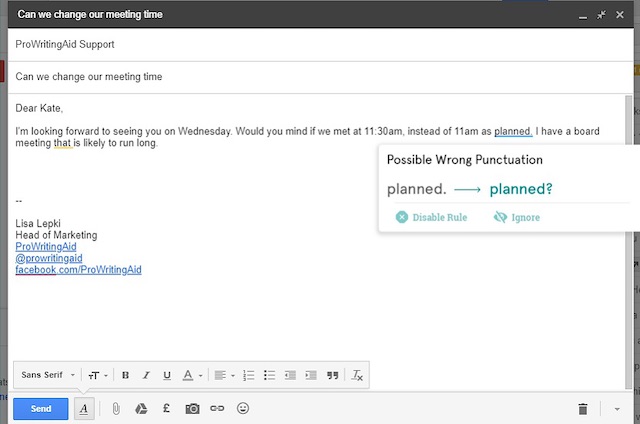
Anyone working in business development or sales is well aware of the daunting challenges they face to create new business, increase revenue, and more or less “keep the lights on.”
Because of the high-stakes nature of sales, sales teams often send out thousands of generic emails to prospective clients. Yet, this emphasis on quantity over quality does not automatically translate to more replies or sales.
In fact, research proves that the response rate for these emails is incredibly low. According to one e-communications firm, Woodpecker, emails that are personalized have a 17 percent reply rate compared to a 7 percent reply rate for non-personalized emails.
The Art of the Cold Sales Email
So, personalisation is effective, but it's a lot of work to send high-quality, personally tailored emails to prospective clients. It’s hard to figure out how to personally appeal to a client you don’t know in an email, and it’s even harder to repeat this process over and over to different clients.
Despite the significant investment and the labor involved, it's clearly better to take the time to craft personal, tailored emails to potential clients.
Successful sales strategies are primarily the result of developing long-term relationships. So if you’re looking to get a new client, you should see the first email as the beginning step in developing a relationship. A well-crafted, personal email is more likely to activate that relationship.
Why? Because people respond to emails that they feel were written specifically for them – they feel that you care.
It may seem daunting to research and compose personal emails to loads of potential clients, but below I provide a simple five-step framework that you can use to make this process more streamlined, strategic, and effective.
Step 1: Get to Know the Prospective Client
A successful sales email will be personal, both in terms of how you talk about yourself but also in terms of how you talk about the client. You should spend at least 20–30 minutes learning about who they are from two perspectives: the company’s and the client as an individual.
To understand the company’s perspective, you should do a Google news search of the company, or industry, and figure out what news might be affecting them:
- Are sales up or down?
- Did the company just buy a smaller rival?
- Do they have a new CEO?
- In terms of the individual’s perspective, look on their Linkedin bio. What kind of thread do you see running through their work?
- What does this person care about?
- Does it seem like they’re a marketing, management, or perhaps a data-analytics person?
- If they post on LinkedIn or Twitter, what are they talking about?
You want to develop a mini case file on the client and the company. Once you’ve studied the file, and looked for as many interesting points of connection as possible, you want to select one rich connection point (RCP) that will you use to personalize the email.
Step 2: Write an Amazing Subject Line
There is a lot of great data and advice out there about writing great subject lines, but for the most part a great subject line does three things:
- Uses the person’s name
- Asks them a question
- Personalizes the question
So, for example, you might have found out that a prospective client, Anthony, wrote an article about a B2B SAAS strategy that you found interesting. This article is your RCP (rich connection point) that you will use to personalize the body of the email. Your subject line might be: Can we chat about your SAAS article, Anthony?
Or, your RCP for a prospective client might be that they have talked about the importance of effective internal communication in a company video on YouTube. So you might write as a subject line: Do you have time to discuss the importance of internal communication, Samantha?
The goal here is not just to get them to open up the email but to prime them for what you will talk about in the body of the email.
Step 3: You, Me, We
The body of the email must accomplish two key goals:
- Prove to the client that you care about them
- Prove that you are worth talking to

To do this, you can follow the You, Me, We framework.
You
Your first two sentences will address the RCP that you identified in your research from step 1. The reason for talking about the client first is that you want to grab their attention by showing them that this email is personal and specific to them.
Given the hundreds, if not thousands, of impersonal emails people receive daily, talking about them first will activate their attention and interest. For example, for the first client, Anthony, you might write:
Hi Anthony,
I found your article in the July issue of Entrepreneur magazine really insightful, especially your point about how design thinking can help illuminate challenges in the B2B sales cycle.
As Anthony reads this sentence he is thinking, “Wow this person really read and cared about that article I put a lot of time and energy into. Great!”
Be careful though: nothing says "low effort" like grammar and spelling mistakes. Try ProWritingAid's Chrome Extension or Microsoft Office Extension to automatically check your emails for errors and writing style suggestions.

Me
Next, you are going to talk succinctly about yourself, who your company works with and what problems they solve. Be open to adding in small bits of color when possible, as I did here:
I’m a sales associate for Vector (and I grew up one state over from you in Tennessee), a small B2B software firm that helps companies like yours develop new solutions to sales-cycle challenges.
We
This is where you explain what specific benefit you and your company would bring to the client and their company:
I think Vector’s solutions address many of the issues that you and your company are facing, and I think our solutions could really transform how you think about the sales-cycle in profitable ways.
Step 4: Call to Action
In step 4, you want to make a crystal clear request and make it as easy as possible for the prospective client to say yes to the request:
Would you be open to a 10 minute discussion early next week to talk about your article, Vector, and how we might work together?
Best, AJ
Step 5: Follow Up
There is a significant amount of data out there that suggests a follow-up email greatly increases the chances of getting a reply. So you must follow up at least once, if not twice or three times.
The simplest way to do this is to reframe your initial CTA by adding a small amount of new information to it so it could intrigue the client. In Anthony's case, you would reply to your initial email, with the original subject line, and say:
Hi Anthony,
I’m still really excited at the idea of us working together, and we’ve recently added a new feature to our SAAS that I think you’d find fascinating. Would a brief call late next week work for you?
How to Write a Strong Sales Email: Final Thoughts
In summary, the best way to think about writing a great cold sales email is to think of the golden rule: write to prospective clients as you would like to be written to.
Keep it short, show that you understand the person, offer something of value, and follow up thoughtfully.
Good luck!


